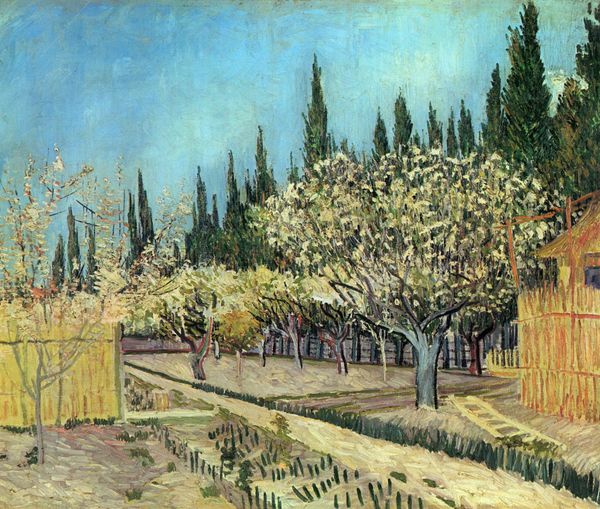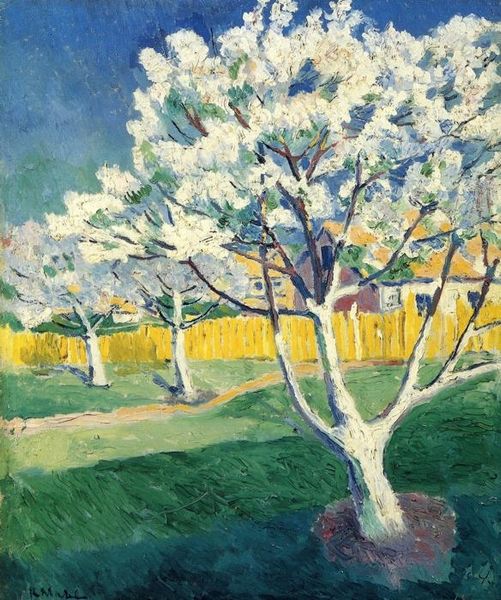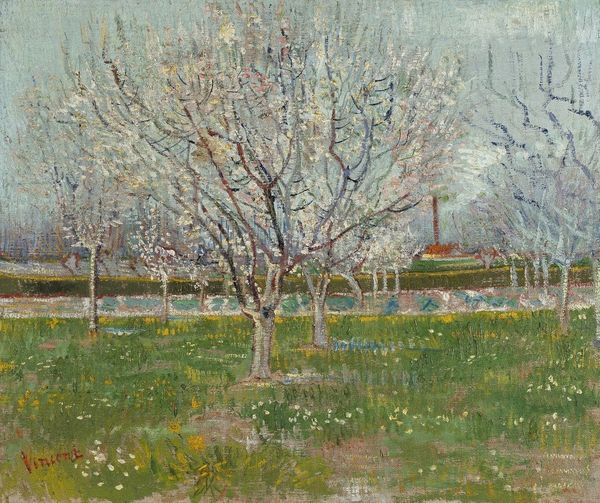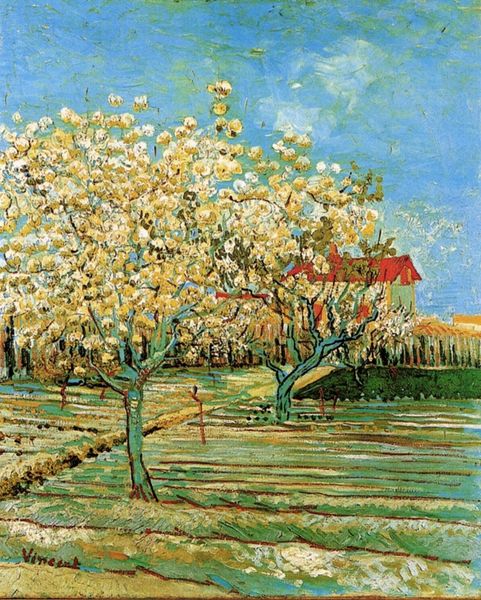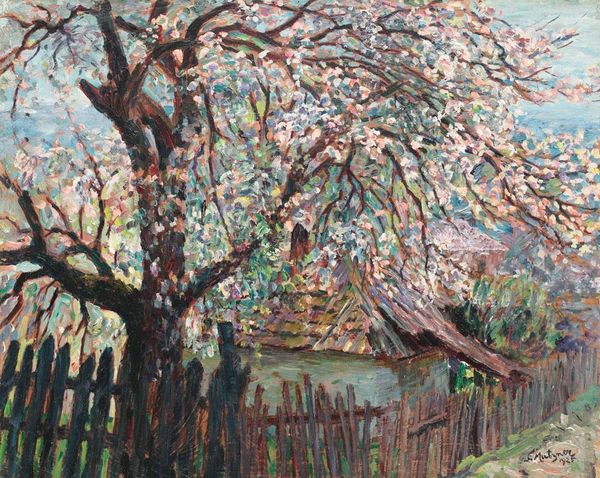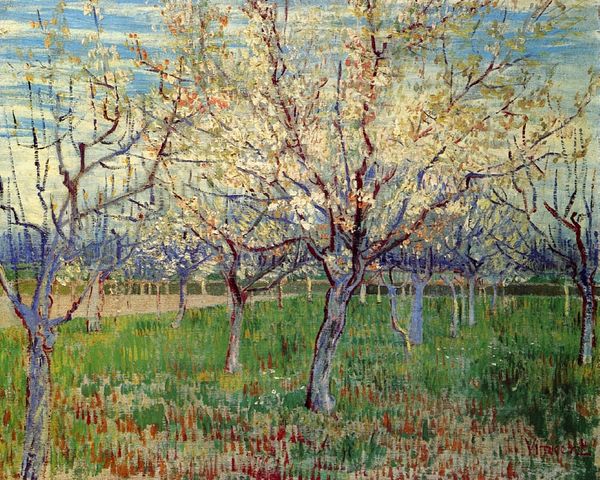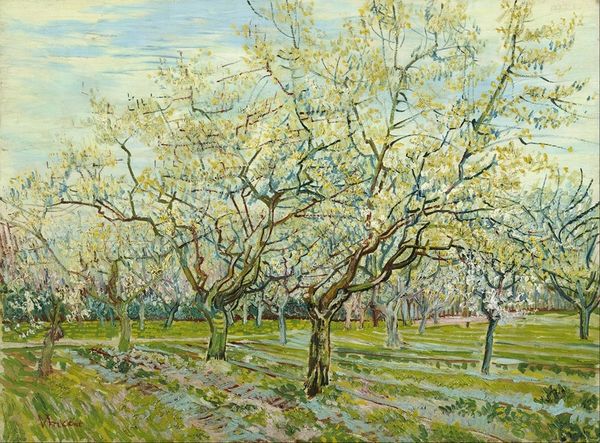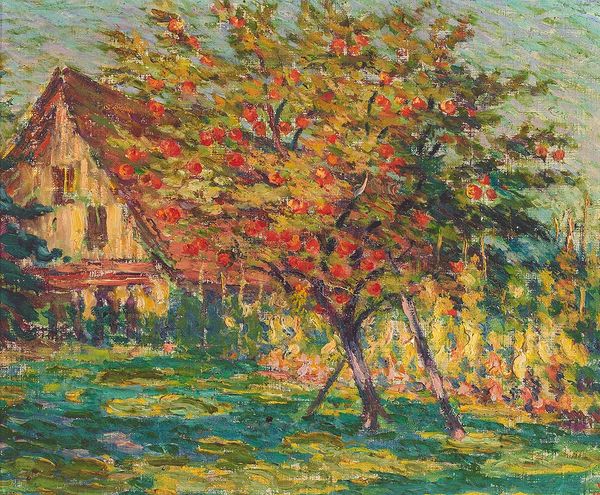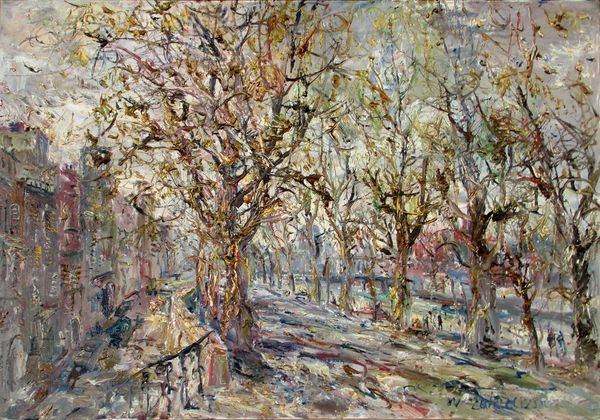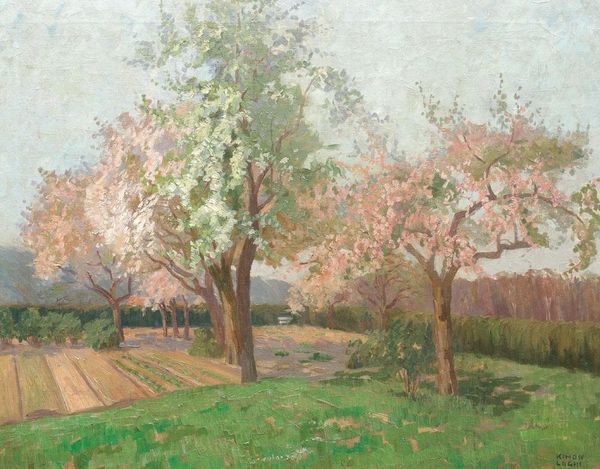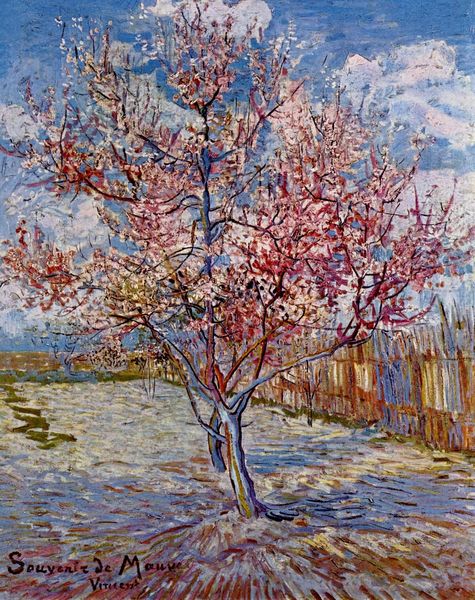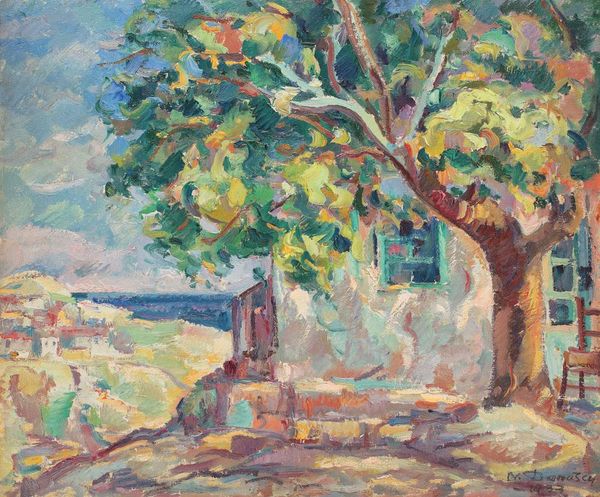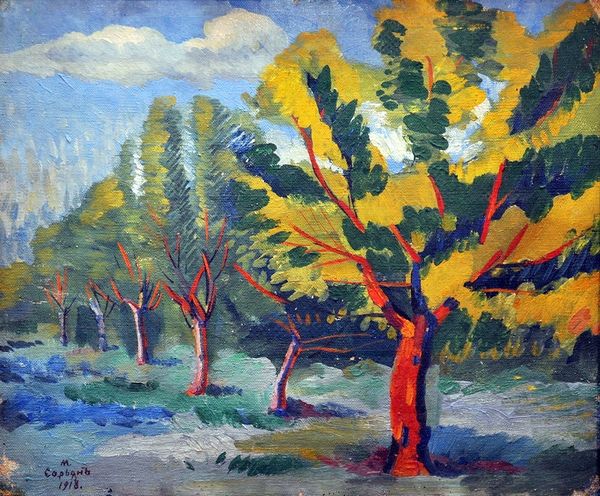
Copyright: Public Domain: Artvee
Curator: What strikes me immediately about Van Gogh’s "Orchard Bordered by Cypresses" from 1888, is its potent contrast of textures and color, especially that dynamic impasto! The sky's almost a hazy turquoise that amplifies the orchard's vibrancy. Editor: It's more than just vibrant. Look at the way the composition pushes against traditional landscape ideals. The rigid lines of the orchard pathways are juxtaposed against the expressive brushstrokes of the trees and sky. It speaks of order versus nature’s inherent wildness. I see socio-political commentary there, perhaps a nod towards humanity’s attempt to control and cultivate its environment. Curator: Or could it be simpler than that? Van Gogh was deeply moved by the cycle of nature, by rebirth. The blossoming orchard symbolized hope and renewal to him, resonating deeply during his stay in Arles, a place where he dreamed of artistic community, but in its cypress trees, a familiar shape for death, so closely bound. Editor: Perhaps, but artists don't exist in vacuums. We know Van Gogh was engaging with broader cultural conversations through art journals, and thinking about rural labor versus city living, or the industrialisation of agriculture. Isn't it possible this composition reflects on this, creating visual tensions within what should be a serene landscape? He could have been saying more than he was actually intending, perhaps commenting about Arles itself. Curator: But those cypresses, they act as constant symbolic markers of mortality. Standing as dark columns at the rear. To me, they suggest an awareness of the brevity of the blossoming, a symbol of mortality always looming, a subtle dance between life and death, visible at the beginning of the bloom in the spring. Editor: The power of public imagery at work: what was understood through cypresses culturally then seeps through and affects readings of the painting now. I can respect that! Still, art serves social purposes; it doesn't hide from reality and history either, and it's been interesting to talk this over! Curator: It has been insightful to ponder with you; Van Gogh was no doubt capturing the beautiful essence of springtime in Arles while also reflecting deeper human realities. The magic is in both.
Comments
No comments
Be the first to comment and join the conversation on the ultimate creative platform.
